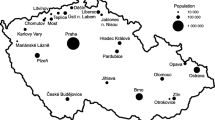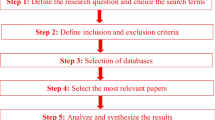Abstract
The paper provides a literature review of public road transport efficiency. We classified 24 articles published between 2000 and 2011, based on journals, date of publication, the nature of the papers’, the context of the study, the adopted approach by which efficiency is measured, the adopted outputs and inputs and empirical findings. Results are presented, discussed and future directions are generated. The classification scheme technique shows that the application of the mixed approach of Data Envelopment Analysis and Stochastic Frontier Analysis (DEA-SFA), with operators of different nationalities, is more robust for analysis of public transport efficiency, and for identifying sources inefficiency. Financial variables are important inputs and outputs for efficiency studies. However, although the frontier literature has substantially contributed to the knowledge of public transport technologies and the determinants of performance, it has been found that many important issues remain unresolved.



Similar content being viewed by others
Notes
The increasingly popular empirical use of linear programming techniques for calculating efficiency scores is due to the DEA model introduced to the general research public in CCR.
References
Agarwal S, Yadav SP, Singh SP (2011) DEA based estimation of the technical efficiency of state transport undertakings in India. Opsearch 47(3):216–230
Ahern A, Anandarajah G (2007) Railway projects prioritisation for investment: application of goal programming. Transp Policy 14:70–80
Aigner DC, Lovell AK, Schmidt P (1977) Formulation and estimation of stochastic frontier production function models. J Econom 6:21–37
Banister D, Berechman J (2000) Transport investment and economic development. UCL Press, London
Banker RD, Morey RC (1986) The use of categorical variables in data envelopment analysis. Manag Sci 32(12):1613–1627
Barnum DT, Gleason JM (2007) Technical efficiency bias in data envelopment analysis caused by intra-output aggregation. Appl Econ Lett 14(9):623–626
Barnum DT, Karlaftis MG, Tandon S (2011) Improving the efficiency of metropolitan area transit by joint analysis of its multiple providers. Transp Res, Part E 47:1160–1176
Barros CP, Peypoch N (2010) Productivity changes in Portuguese bus companies. Transp Policy 17(5):295–302
Battese GE, Coelli TJ (1995) A model for technical efficiency effects in a stochastic frontier production function with panel data. Empir Econ 20:325–332
Berechman J (1993) Public transit economics and deregulation policy. North-Holland, Amsterdam
Boame AK (2004) The technical efficiency of Canadian urban transit systems. Transp Res, Part E 40(5):401–416
Burgess JF, Wilson PW (1993) Technical efficiency in veterans administration hospitals. In: Fried HO, Lovell CAK, Schmidt SS (eds) The measurement of productive efficiency. Techniques and applications. Oxford University Press, New York, pp 335–351
Charnes A, Cooper WW, Rhodes E (1978) Measuring the efficiency of decision making units. Eur J Oper Res 2(6):429–444
Chu X, Fielding G, Lamar B (1992) Measuring transit performance using data envelopment analysis. Transp Res 26A:223–230
Coelli T, Prasada Rao DS, Battese GE (1998) An introduction to efficiency and productivity analysis. Kluwer Academic, Boston
Costa AÂ (1998) Public transport efficiency and effectiveness: metro de Madrid. In: Button K, Nijkamp P, Priemus H (eds) Transport networks in Europe: concepts, analysis and policies. Elgar, Cheltenham, pp 248–264
Cowie J (2002) Acquisition, efficiency and scale economies: an analysis of the British bus industry. Transp Rev 22(2):147–157
Cullinane K, Song DW, Ji P, Wang TF (2004) An application of DEA windows analysis to container port production efficiency. Rev Network Econom 3(2):184–206
De Borger B, Kerstens K, Costa A (2002) Public transit performance: what does one learn from frontier studies? Transp Rev 22(1):1–38
De Borger B, Kerstens K, Staat M (2008) Transit costs and cost efficiency: bootstrapping non-parametric frontiers. Res Transp Econ 23(1):53–64
Farrell MJ (1957) The measurement of productive efficiency. J R Stat Soc, Ser A 120(3):253–281
Farsi M, Filippini M, Kuenzle M (2006) Cost efficiency in regional bus companies: an application of new stochastic frontier models. J Transp Econ Policy 40(1):95–118
Forsund FR, Sarafoglou N (2002) On the origins of data envelopment analysis. J Product Anal 17:23–40
Fried HO, Lovell CAK, Schmidt SS, Yaisawarng S (2002) Accounting for environmental effects and statistical noise in data envelopment analysis. J Product Anal 17(1–2):157–174
Ganley JA, Cubbin JS (1992) Public sector efficiency measurement: applications of data envelopment analysis. North-Holland, Amsterdam
García Sánchez M (2009) Technical and scale efficiency in Spanish urban transport: estimating with data envelopment analysis. Advances in operations research, vol 15
Glaister S, Starkie D, Thompson D (1990) The assessment: economic policy for transport. Oxf Rev Econ Policy 6:1–21
Holvad T, Hougaard JL, Kronborg D, Kvist HK (2004) Measuring inefficiency in the Norwegian bus industry using multi-directional efficiency analysis. Transportation 31(3):349–369
Hsiao C (2003) Analysis of panel data, 2nd edn. Cambridge University Press, Cambridge
Karlaftis MG (2003) Investing transit production and performance: a programming approach. Transp Res, Part A 37(3):225–240
Karlaftis MG (2004) A DEA approach for evaluating the efficiency and effectiveness of urban transit systems. Eur J Oper Res 152(2):354–364
Karlaftis MG, Tsamboulas D (2012) Efficiency measurement in public transport: are findings specification sensitive? Transp Res, Part A 46:392–402
Kerstens K (1996) Technical efficiency measurement and explanation of French urban transit companies. Transp Res A 30:431–452
Kumar S (2011) State road transport undertakings in India: technical efficiency and its determinants. Benchmarking 18(5):616–643
Li T, Gavusgil ST (1995) A classification and assessment of research streams in international marketing. Int Bus Rev 4(3):251–277
Lovell CAK (1993) Production frontiers and productive efficiency. In: Fried H, Lovell CAK, Schmidt S (eds) The measurement of productive efficiency: techniques and applications. Oxford University Press, Oxford, pp 3–67
Lun YHV, Quaddus MA (2011) Firm size and performance: a study on the use of electronic commerce by container transport operators in Hong Kong. Expert Syst Appl 38:7227–7234
Mackie P, Preston J, Nash C (1995) Bus deregulation: ten years on. Transp Rev 15:229–252
Marasco A (2008) The relationship between FDI and growth under economic integration: is there one? Papers of the annual IUE-SUNY Cortland conference in economics. In: Proceedings of the conference on emerging economic issues in a globalizing world, Izmir University of Economics, pp 285–296
Marchand M, Pestieau P, Tulkens H (1984) The performance of public enterprises: normative, positive and empirical issues. In: Marchand M, Pestieau P, Tulkens H (eds) The performance of public enterprises: concepts and measurement. Elsevier, Amsterdam, pp 3–42
Margari B, Erbetta F, Petraglia C, Piacenza M (2007) Regulatory and environmental effects on public transit efficiency: a mixed DEA-SFA approach. J Regul Econ 32(2):131–151
Meeusen W, van den Broeck J (1977) Efficiency estimation from Cobb-Douglas production function with composed error. Int Econ Rev 18:435–444
Nord K, Nilsson J, Nilsson B, Uhlén M, Nygren PA (1995) A combinatorial library of an alpha-helical bacterial receptor domain. Protein Eng 8:601–608
Odeck J (2008) The effect of mergers on efficiency and productivity of public transport services. Transp Res, Part A 42(4):696–708
Odeck J, Alkadi A (2001) Evaluating efficiency in the Norwegian bus industry using data envelopment analysis. Transportation 28:211–232
Odeck J, Alkadi A (2003) The performance of subsidized urban and rural public bus operators: empirical evidence from Norway. Ann Reg Sci 38(3):413–431
Paulley N, Balcombe R, Mackett R, Titheridge H, Preston J, Wardman M, Shires J, White P (2006) The demand for public transport: the effects of fares, quality of service, income and car ownership. Transp Policy 13:295–306
Pina V, Torres L (2001) Analysis of the efficiency of local government services delivery: an application to urban public transport. Transp Res, Part A 35(10):929–944
Rees R (1984) Public enterprise economics, 2nd edn. Weidenfeld & Nicholson, London
Sampaio BR, Neto OL, Sampaio Y (2008) Efficiency analysis of public transport systems: lessons for institutional planning. Transp Res, Part A, Policy Pract 42(3):445–454
Saxena P, Saxena RR (2011) Measuring efficiencies in Indian public road transit: a data envelopment analysis approach. Opsearch 47(3):195–204
Sena V (2006) The determinants of firms’ performance: can finance constraints improve technical efficiency? Eur J Oper Res 172:311–325
Seuring S, Muller M, Westhaus M, Morana R (2005) Conducting a literature review—the example of sustainability in supply chains. In: Kotzab H, Seuring S, Muller M, Reiner G (eds) Research methodologies in supply chain management. Physica, Heidelberg, pp 91–106
Sheth C, Triantis K, Teodorovic D (2007) Performance evaluation of bus routes: a provider and passenger perspective. Transp Res, Part E, Logist Transp Rev 43(4):453–478
Thompson RG, Langemeier LN, Lee C-T, Thrall RM (1990) The role of multiplier bounds in efficiency analysis with application to kansas farming. J Econom 46(1–2):93–108
Tone K, Sawada T (1990) An efficiency analysis of public vs. private bus transportation enterprises. In: Bradley H (ed) Operational research ’90. Pergamon, New York, pp 357–365
Tulkens H (1993) On FDH efficiency analysis: some methodological issues and applications to retail banking, courts, and urban transit. J Product Anal 4:183–210
Von Hirschhausen C, Cullmann A (2010) A nonparametric efficiency analysis of German public transport companies. Transp Res, Part E, Logist Transp Rev 46(3):436–445
Yu M-M, Fan C-K (2009) Measuring the performance of multimode bus transit: a mixed structure network DEA model. Transp Res, Part E, Logist Transp Rev 45(3):501–515
Author information
Authors and Affiliations
Corresponding author
Rights and permissions
About this article
Cite this article
Jarboui, S., Forget, P. & Boujelbene, Y. Public road transport efficiency: a literature review via the classification scheme. Public Transp 4, 101–128 (2012). https://doi.org/10.1007/s12469-012-0055-3
Published:
Issue Date:
DOI: https://doi.org/10.1007/s12469-012-0055-3
Keywords
- Public road transport
- Efficiency and performance
- Classification scheme
- Data Envelopment Analysis
- Stochastic Frontier Analysis




